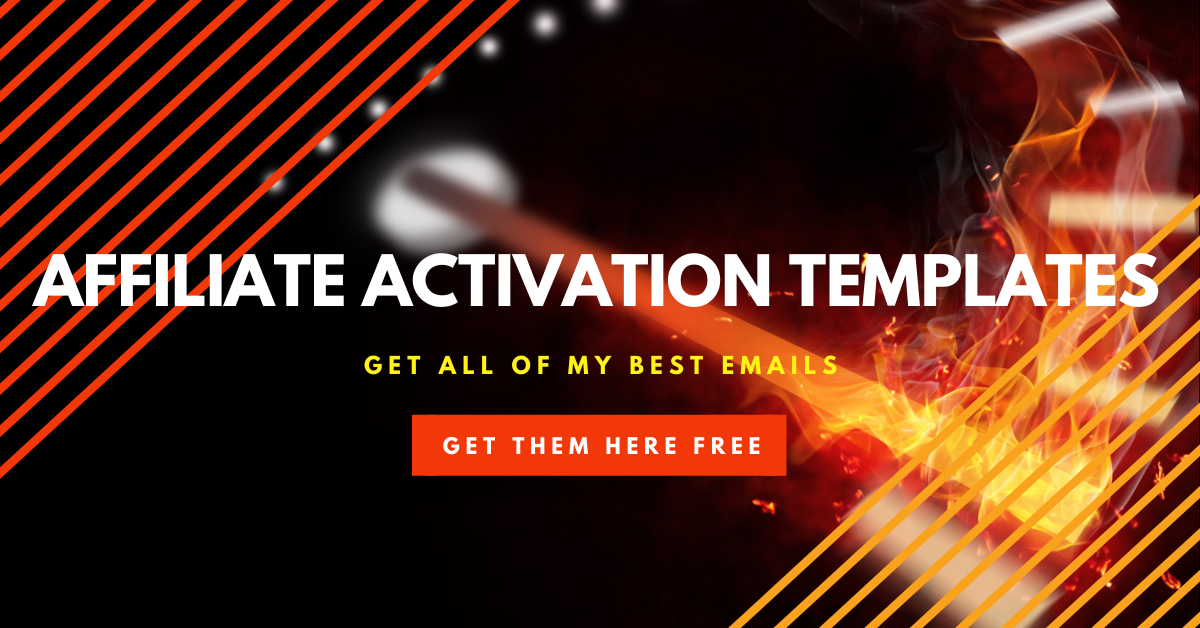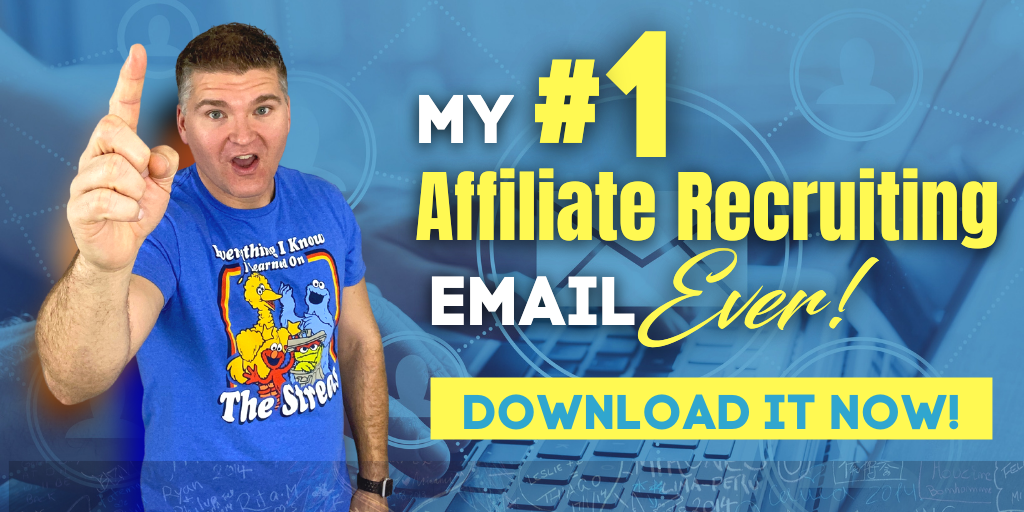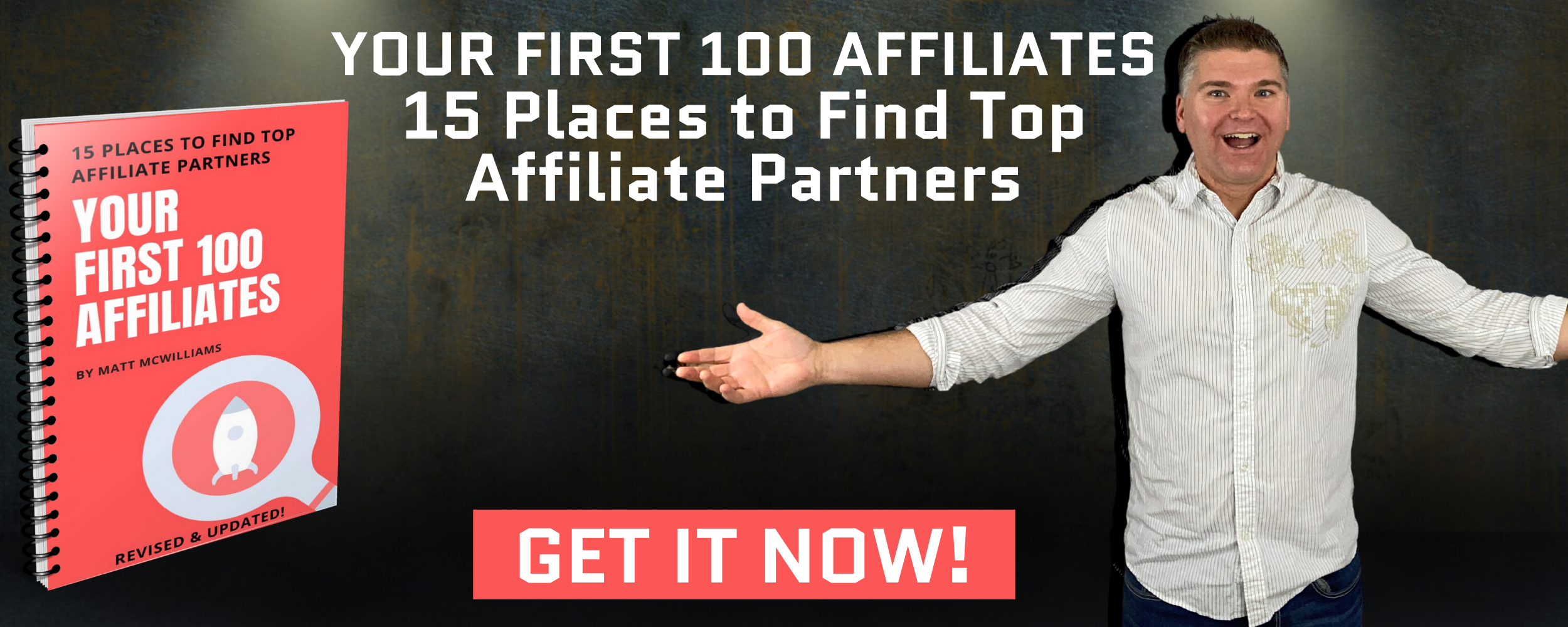You’ve got questions. I’ve got answers. Today, I’m answering a backlog of affiliate marketing questions from affiliate recruiting to how to write an email to your affiliates. Plus, thoughts on social media, affiliate networks, and how to work with virtual assistants…and a whole lot more!
Click Here for The Written Transcript of This Episode
Need help activating your affiliates? Use my proven email templates for getting inactive affiliates in the game and making sales! Get them here!
LINKS MENTIONED IN THIS EPISODE
Get My Best Affiliate Recruiting Email
Affiliate Program Email Template
Text me at 260-217-4619
Don’t Miss An Episode – Subscribe Below
Previous Episodes of The Affiliate Guy
How to Create Recurring Affiliate Revenue Promoting Membership Sites
Behind-the-Scenes on Our Affiliate Promotion for Product Launch Formula
How to Promote Virtual Summits as an Affiliate (If You Aren’t a Speaker)
Fix Your Funnel: How to Increase Sales and Make Your Affiliates More Money with John Ainsworth
Affiliate Marketing Lesson: Shifting From Promoting Free Content To A Paid Product
Book Launch Party: An Interview with Matt About Turn Your Passions Into Profits
Listener Q&A: Finding Affiliates, What’s Working in Affiliate Recruiting, Email Templates, and More
You’ve got questions, I’ve got answers.
Today I’m answering a backlog of affiliate marketing questions, from affiliate recruiting to how to write an email to your affiliates, plus thoughts on social media, affiliate networks, and how to work with virtual assistants and a whole lot more.
So I’m doing something I haven’t done in quite some time today, almost six months. I’m taking questions, I’m answering a bunch of questions.
And this is something when I set out, when I created the podcast, I kind of made a commitment to doing this at least three times a year, preferably four, about every quarter.
And I forgot in the last quarter of last year with the book launch and everything going on, and one of the things I even talk about in the book is how content is really easy for me.
Now, coming up with content is so much easier than it was seven or eight years ago.
I outlined how to do all of that in the book, but it’s so much easier because I could, in theory, just answer a question on every episode and that would be the content.
Like, I have so many questions that I’m able to create basically unlimited content just from those questions, so I don’t have to worry about what kind of content you create.
And just by the way, you can ask your question. This is where all of these came from.
And asktheaffiliateguy.com if you go to asktheaffiliateguy.com, you can ask your question there.
Make sure you put your information if you want a public shout out, make sure you put your information there.
And so this is where our first question came from, actually and it is from I do not know how to pronounce this first name T-A-D-H-G.
I’m assuming it’s like a Welsh name, maybe? Or an Irish name.
And I am so sorry because last name is O’Crowley, so it’s got to be Irish or Scottish or Welsh then. It’s probably Dutch, but whatever. I don’t know. I have no idea.
I have to Google that and see is that a male or a female name? Said, “Hi, Matt, I’ve been working through FAN and have reached out to over 150.”
So FAN is Find Affiliates Now. It’s our premium course on How to Find Affiliates Now.
“Instead, I’ve reached out to over 150 travel bloggers. Any advice on the response?”
All right. In a few niches, this is extremely common. Travel is one of them. Most niches, it’s not relevant.
Most niches, you don’t have to worry about this. You might get 10 or 20% that respond this way.
But in the travel niche, it’s also very, very common in like, the weight loss niche and a few others where they’re just like, all we’re doing is paid promotions or they’re doing paid placements with an affiliate component.
Here’s the thing:
Number one, when you’re starting out and you don’t have the budget, you cannot allocate thousands or tens of thousands of dollars for paid promotions.
You’re going to have to sell them on the benefits to them. All right? So be honest and say you don’t have much of a budget at this time.
You can blame your finance team, which is you, but blame the finance team and say, “Hey, I don’t have the budget for this, but I would love to show you how well it converts and how you will make more in the long run and even pretty quickly in the short run if you do this as an affiliate.”
Here’s our conversions. Here’s what you will make. If you did $1,000 paid placement and generated this much traffic and this many sales, you would make exactly $1,000.
But if you do it as an affiliate, you will make $1,600, $1,800, whatever number is more. That would make sense.
So show them how well it converts, how they can make more money in the long term. The second part to that is consider doing a small paid placement plus a commission.
A lot of times what they’re looking for with the paid placement is it’s a weed out. It’s kind of like in college, I was a psychology major and we had Biopsychology Psych 201.
It was biopsychology. It was the weed out class. It was meant to weed out the kids who were not really into psychology, who did not want to go through.
And the funny thing is, it’s the only class in college, the only class in my sophomore year that I made an A, and I actually made like a 97 was my average because I was fascinated by it.
The neuropsychology side of things, the actual brain chemistry was fascinating to me. Unfortunately, I don’t remember 95% of what I learned, but I was fascinated at the time.
So that weed out class, kind of the same thing here with a weed out paid placement fee. It’s like let’s weed out the riffraff.
Let’s weed out who’s not serious? So could you swing a two or $300 paid placement? Maybe they’re asking for 750. Could you swing 250 and a commission? It shows you’re serious.
You’re not some sort of Joe Schmo off the street, but you’re still willing to be able to pay something up front and do a commission.
So those are my options there. That worked really well.
Typically, we’ll get about 70% to end up taking one of those options in the end, not 100% by any stretch, but even at 50% out of, let’s say you got 30 people who said that you’ll get ten to 15 to do one of those.
All right, another question from some of our Find Affiliates Now, students Chloe and Nile, I think N-I-A-L-L-I think it’s pronounced Nile.
They both ask similar, very similar questions, basically summing it up here what’s working in affiliate recruiting.
Now, I’ve been through FAN Find Affiliates Now, is there anything new that’s not in the course? Well, I’m going to go ahead and tell you guys.
There is something that we will be putting into Find Affiliates Now when we redo the course later this year or early next year, we are testing this out.
So please do not go out and do this, and it may not work in every niche. Do not go out and do the same.
Matt says it’s guaranteed to work. No, what we put in our courses is guaranteed to work.
Sometimes what I share on the podcast is something I’ve tried once or twice, and it maybe still doesn’t work.
Don’t hold this against me if this doesn’t work, but it passes the smell test, too. When I share this, you’re going to go, yeah, it kind of makes sense.
There’s a couple of things I did with my book launch that worked really well.
The first was I sent a message out to people that I was connected with, either really tightly or loosely connected.
After a couple of months of the book launch, after we’d already hit some of the early Amazon bestseller list, and stuff like that.
And we were doing really well, and our numbers were looking really good, and I sent a message out via email, text, Facebook, DM, et cetera, saying, “Hey, so and so
I just wanted to ask for some of your advice on my book launch, see if you had any strategies or any connections that maybe I haven’t thought of. We’re doing really great so far.
We’re well ahead of schedule, and we’re on target or actually a little bit ahead of a target for our goal of selling this many books.
So I just wanted to make sure. I wanted to uncover all the stones, and so on and so forth”, right? Was the basic gist of the message.
Now, when we break that down, number one, I’m just asking for advice. I’m not saying, hey, will you promote? I’m not asking that.
Although what ended up resulting out of about 150 to 200 of those messages is about 40 or 50 of them said, sign me up, let me promote, let me have you on my show, let’s do an interview, et cetera, et cetera.
So that’s number one, is I’m not asking for them to promote. I’m just saying, do you have any advice or do you know anybody who might be a good fit to promote this?
And so they volunteered to promote. The second thing is, I’m talking about the success.
I’m not bragging, per se. I’m just saying we’re doing really well. Basically. I left out one part there.
“We’re doing really well, and I want to make sure that we definitely finish strongly.
I was like, we have a really good chance to possibly finish up much higher on the best seller list than we expected.
And so I’m looking for some advice and some help on that.”
People want to be a part of something that’s winning and if the reality is that early on, I’m doing really well, people want to be a part of that.
Get my #1 affiliate recruiting email (the one I’ve personally used to recruit thousands of affiliates in dozens of niches). Grab your copy here!
So there’s two parts to that email that works really well.
The other thing, and this is typically going to be only applicable on a book, I think there’s some ways that you could possibly do this with courses and other physical products, but it really worked well for a book.
So we had this list of podcasts, hundreds of podcasts that I wanted to be on.
We ended up doing I did over 125 podcast interviews, but we had a list toward the end with about a month ago of, I don’t know, 600-700 podcasts, I think that we heard no reply from, never heard anything.
We tried all the traditional stuff, the stuff that’s in Find Affiliates Now that’s worked for decades and we had a pretty good response rate.
To get 125 responses out of about 600 emails is great. Whatever the math is on that. I mean, it’s a pretty good response rate.
But what about the other like I said, it was over 500 left, I think. What about those?
I reached out to them and basically just said I put the name of the book that they had promoted before.
So maybe they’d done an interview with the author of such and such book.
I put the name of that book in the subject line, and I said, it’s like the name of that book.
So if the name let’s just do Launch by Jeff Walker. I said it’s like Launch and I reached out and I said, “Hey, sold it a while back.
You interviewed Jeff Walker for his book launch. Great interview.
I’ve got a book coming out called Turn Your Passions into Profits, and I’d love to send you a copy and if you like it, would love to be on the show.”
That was the basic gist of it. We had over 50 people respond to these are people who had responded to none of the previous seven or eight emails, and over 10% of them responded to this email.
Unbelievable response rate. So we’re mailing these books out left and right and of course, the point there is I’m basically saying, I’d love to send you a copy of my book.
What’s the best address to send it to? And so we got a ton of responses. We had over 50 replies, almost 80% of those.
I think we ended up with 38 of those. I think we had 52 responses, 38 of them.
So whatever the math is on that one, roughly 75% of those ended up doing an interview for the prelaunch, and we had a few more that ended up doing an interview after the pre launch officially.
So actually, I’ve got even a couple of interviews scheduled this week from that reach out that we just weren’t able to work it into the pre launch schedule.
So that’s been working really well. Just think about how you could apply that to your products.
“Hey, could I send you my Widget by such and such? Could I send you one and have you tested out?”
All right, this is what I’ve gotten like a half a dozen times so far this year. In the first six weeks of the year, I’ve gotten a ton.
How do I write an email to my affiliates? I’m struggling for a starting point, or I don’t know where to start.
I don’t even know what to include in the email. Was something that another person said.
This is something actually, internally, we have a template and so we have a template that we use for writing emails to our affiliates.
It’s an outline of a typical affiliate program update email. It can be used during product launches, promotions, evergreen programs. It’s meant as a guide.
All right, so not every email that we send uses each section of this template. So I’m going to give you the template here, and then I’ll encourage you to go download a copy of the template.
We created it for you. It’s super and easy to reference.
I’m not going to go in through the whole thing in this episode, but if you go to MattMcWilliams.Com/aetemplate affiliate email template, so you can just grab a copy of this.
It’s the exact one we use internally. We made it a little bit prettier recently, so it’s got some cool graphics and stuff, just easier to follow. But we made a template for our internal use.
So here’s how it goes:
The first thing, what’s happening?
What is going on today?
What is happening this week?
What is something big that’s happening in the launch of the promotion?
So it’s launch day.
We’re officially live.
It’s webinar day.
Webinar registration is open.
The sales page is live.
All right, so this is the what’s happening section.
Typically, you might have their link right away, like the link that’s relevant for today or this segment of the promotion.
Maybe I note that there’s some resources below as well.
The second section is RAH RAH. We call this the RAH RAH section.
This is where we are cheering them on. We’re sharing exciting news. We’re sharing some cool stats. Whatever we can do to inspire and motivate them.
So one of the examples that we include in the template and there’s examples of all these, we got like three or four examples in the template.
So you don’t have to just kind of go, what’s RA RA? I don’t know. You know, sales are pouring in.
The conversion rate is through the roof is one of the examples in there and so sometimes we include the leaderboard in this one if it serves to inspire and motivate.
So we’ll include the leaderboard here if there’s some big shifts, especially at the top.
The third section. So we got the what’s happened in the RAH RAH. We got to educate. We got to educate them.
This is when we teach them what they need to do, what they need to know to succeed for that day or for tomorrow or for the rest of the promotion.
What are other top partners doing? What strategies are working? What are some how tos that we can do?
So we’ll put how to properly use swipe copy or how many emails you should send this week, things like that.
In the educate section, again, there’s more examples in the template.
Number four is the call to action.
This is exactly what we want them to do. Tell them exactly what to do.
One or two things. Not three, not four, not five. One or two, preferably most emails, one.
So we’re going to tell them mail and share about the webinar today, tomorrow, in the morning of Thursday, mail your unopeneds about the workshop right now, if you haven’t.
And so then I tell them where to find what they need. So your swipe copy is below. Or I attached a sample promo plan.
Then section number five is the leaderboard.
If you didn’t put it in the RA RA section, most of the time you won’t. This is where you’re going to put the leaderboard.
You want to make sure to provide commentary and encouragement or if it works for that person, a little bit of trash talk type things.
But this is where you’ll include your leaderboard and then section six is your final message or encouragement.
So this week, sometimes like RA RA part two, right, this is your final message before you sign off, one or two sentences is enough.
So you say something like, “Hey, magic is happening right now. We’re headed for uncharted territory. If I can be of any help, let me know. Keep up the great work and remember that we are here to help.”
Stuff like that. Then you have your signature.
Make sure you tell them how to reach out to you, phone number, et cetera, whatever that is and then at the bottom of the email below the signature.
So this is all just the message. Above is the what they need. So this is where all the stuff goes. What do they need to succeed here?
Things like their links, their swipe, copy graphics, log into the affiliate portal and all the stuff there.
Make sure you make it super easy for them to know where to find these things so you can grab that template.
Just go to MattMcWilliams.Com/aetemplate We’ll put a link in the show note as well. MattMcWilliams.Com/aetemplate
Download the template. Use the template again. Sometimes you’ll find that you don’t need everything.
This is not every single email. Sometimes there’s no time for educate.
If you’ve got along what’s happening in a pretty lengthy RA RA, and you know you’re going to have two calls to action, maybe you don’t educate them in that email, and then you spend more time educating them in the next one.
And obviously, if it’s two days before the launch, if it’s a launch, there’s no leaderboard. So that section comes out.
But it gives you kind of a template to follow to email your affiliates. This is from username A Burnett. You know who you are.
I don’t I think your last name is Burnett. At least I got that said a few episodes ago, you talked about working with coupon affiliates.
“I’ve read there are a lot of downsides, such as stealing commissions from other affiliates, them getting paid commissions when they really didn’t do much, et cetera.”
Basically, can I talk about that and what I recommend? He actually sent a pretty lengthy message there.
All right, so the problems here, the problems with coupon affiliates, and I did talk just a few episodes ago about coupon affiliates and loyalty affiliates as one of the examples of types of affiliates you might consider recruiting.
And I talked about the big mistakes that people make is not dealing at all with these.
Now, the downside, as I mentioned in that episode, are sometimes you’ll have a coupon affiliate that will steal a commission from another affiliate.
Now, you could argue that they’re not nefarious about it. They’re not stealing it like they’re doing anything illegal, but they know what they’re doing.
And that is that when somebody goes and searches for such and such product coupon or deal, then they’re showing up and they’re converting that person into a sale.
Or they’re converting somebody who never went through an affiliate and they’re getting the commission. So both of those aren’t exactly ideal. Now, here’s the way I look at that.
Number one, if they are, quote unquote, stealing, well, they still help close the sale. They didn’t buy until they saw that coupon and that deal and bought through that deal.
So we call that a closer we call that a closer commission sometimes nd one of the things that we like to do is pay coupon sites a closer commission. So we’ll do a split commission.
The original affiliate or the other last affiliate will get four fifths of the commission, and the coupon site earns one fifth.
So on a 10%, especially in retail products, 10% will do eight and two, and you go, well, why do they get only eight? They should get the ten only didn’t close the sale.
And do you want eight or do you want zero? And as the coupon affiliate, do you want two or do you want zero?
If there’s no affiliate, we’ll pay something like just the one fourth or one fifth of the commission. So that’s how we get around that.
And so most affiliate networks, and we’ll talk about affiliate networks, I think in the next question allow you to do this.
Some in house software allows you to do this as well. Where you can offer split commissions, there’s other creative ways to do split commissions.
You might just give the closer a bonus. So the first affiliate gets the 10% and the coupon site just gets the 2%, whatever. Sometimes I’ve seen it, you might go 60 40.
The 80 20 is not necessarily a rule, a hard and fast rule, but typically the coupon affiliate is going to make less than the other affiliate. A couple of things you need to make sure to do.
Number one, you need to make sure to prohibit them from doing trademark bidding so they can’t bid on your company name or your product name, and then the word coupon or deal or whatever discount, they cannot bid on that.
If you are ready to take your business to the next level and start an affiliate program, start with my free report, Your First 100 Affiliates. This report takes nearly two decades of experience, trial and error, and lessons learned about finding top affiliates in nearly every conceivable niche and puts them all into one report. Grab your copy here!
They can run SEO campaigns, but they can’t bid on keywords involving your trademarks And that you get to define trademarks.
You don’t have to have a registered trademark. To be clear, you could just tell them, don’t bid on my name, don’t bid on Matt McWilliams coupon, don’t bid on, et cetera, et cetera.
You could do whatever you want. You get to create the rules very clear about what you allow in terms of keyword bidding.
Secondly, do not allow them to target your audience. We don’t allow this, period.
This is just a generally good rule with affiliate programs. Do not allow them to target your audience for paid advertising.
And so we think about that 20 a week, a thousand a year, and even just the 20 a week, that’s 20. But I also get hundreds and hundreds of other emails.
How are we supposed to ever respond to every single one of those? It’s impossible.
That’s why we say you want at least 10 follow-ups, preferably 20 follow-ups and so I’m going to walk you through exactly how we do it.
Ultimately it’s a numbers game. The first email you’re get 2 to 3%. The second email you get 2 to 3%.
Yeah, once you hit about ten reach outs, the percentage goes down of the remaining people because you’re dealing with people who are unresponsive to the first ten.
Yeah, there’s only about one, one and a half percent chance they’re going to respond to the 11th one. But overall we end up with a 35% to 40% response rate.
So on 4000 reach outs, that’s 1000 on the low end, 1500 upwards of 1750, that is totally worth it. The key, like I said, ten to 20 follow ups.
So what we’ll do typically we follow up on an eight day schedule for the most part.
Occasionally it becomes nine or ten, just depending upon how the calendar falls and holidays and people’s vacations and stuff.
But we’ll follow up on an eight day schedule, we do not follow up on seven and the reason for that is you’re hitting the same day the next week.
And so when you’re hitting the same day the next week, maybe I’ll give you an example. Like Tuesday is a really busy day for me.
I am recording this on a Tuesday. I have three podcast interviews, two one on one meetings with team members, and I have a big leadership meeting for 2 hours a day.
I will be in meetings or interviews or calls for seven and a half of my eight and a half hour workday today.
And then I immediately have to go to my son’s soccer that I coach. So I have a pretty hard cut-off at 525 today where I have to be gone.
So because of that, I typically don’t even check email on Tuesdays. So if you email me on a Tuesday now, it gets buried down there and I’m just less likely to see it.
But you email me on a Wednesday, that’s the day I play catch up. So we go on an eight day cycle.
So number one, we’re not hitting the same day back to back to back weeks.
Number two, it gives a little bit more space, we’re a little bit less annoying.
And then we’ll do, typically we’ll do ten follow ups in about a 90 day period.
And if we still haven’t heard from them, we will basically kind of press pause on them. We’ll press pause on them.
Usually this kind of depends, like we’ll pick them up at the beginning of two quarters from now.
So if we’re sitting here late February, we’ll pick them up again in July. We’ll do the same.
If it’s mid January, we’ll still pick them up again in July, and we’ll just punt them to a head, roughly four to six months.
And the reason for that is you never know what season they’re in. Maybe they’re in a season where they’ve got a sick loved one.
Maybe they’re sick. Maybe they’re just in a crazy busy two, three months sprint like I was for my book launch.
I didn’t respond to any affiliate stuff for about 120 days. I just wasn’t able to. I was so focused on my book launch.
So maybe they’re like us. When we hit mid to late February, we’re in full swing with travel, soccer, both kids.
Theirs picks up, their number of practices pick up. Our daughter will play at a minimum 27 games this spring, possibly as many as 32.
It’s just crazy, right? They have midweek games. They have Friday through Sunday tournaments.
We literally leave at like three on Friday and get back at ten on Sunday. It’s insane.
And so my work schedule is around that, and it just gets crazy busy. So maybe that’s what their schedule is like.
So we kind of give them a break, and then we hit them up.
At the beginning of the next quarter, we’ll do another ten follow ups, at which point we will then remove them, or at the very least, we will attempt to find a better contact for that person.
If you want to know how to recruit, though, okay, you’re getting a 2 to 3%, maybe even 4% response rate, that’s great.
But maybe if you’re down in the 1% range, 2%, and you want to get a better response, grab our best email MattMcwilliams.com/BestEmail.
I’m going to put that in the Show Notes. Grab that template. That is a proven template that works time and time again.
You can tweak it a little bit, which is essentially what I suggested earlier. That email, we made a couple of slight tweaks to that.
I got creative. That’s another key. Get creative and try some things out.
But if you want the template just to get started, grab that at Mattmcwilliams.Com/bestemail and then the last thing is you need to look beyond email.
Look at developing multiple touchpoints. Communicate with them the way they want to be reached.
I mean, I have so many apps on my phone. I talked about this some number of episodes ago. I’ve got Facebook Messenger, Voxer, Skype. I’ve got Slack for our team.
I don’t have Instagram on my phone, but I could use Instagram DMs. WhatsApp said Voxer already.
There’s tons of apps, text, I have all those apps just for communicating with potential affiliates.
You name it, I’ve used it to communicate with an affiliate. Try mailing, physical stuff.
This cuts through the clutter we sent out super cheap. We sent out a letter, and that the letter it was just a regular standard letter.
Probably cost us, I don’t know, print whatever it costs. A two page letter, three page, I think it was three pages.
We attached a dollar bill to it, so that was our biggest expense other than payroll.
Probably cost us dollar letter in payroll to print it, fold it, address the envelopes, put the stamps on, take them to the post office, all those things.
Postage is like whatever postage is these days for a regular letter, I have no idea. It’s got to be over $0.50, but probably under 75. Might have to Google that one.
So all these things, it’s super cheap. Cost is like 2- $3 per letter. We sent out a letter and it had a dollar bill attached, so it captured attention.
And what it said in that letter was basically, “Hey, this book will help people make their first dollar online. Here’s why that’s important.”
That’s what the dollar represents and it was just a way of standing out. So try some physical mail.
We did for some key prospects. We mailed them a copy of the book and included a flyer in that.
These cost the book, plus the postage, probably $27 to $30 package. So you can’t send 1000 of those unless you have $30,000.
We didn’t want to send 1000 of those. We wanted to send them to highly targeted people. So I think we sent them to 75 to 100 people.
But it stood out because they’re getting this in the mail. They opened it and they read it, and we got a lot of partners from that.
All right, so we’re down to our last two or three questions here. We got this one from multiple people in the past few months.
It seems like every time I do a training for a client, we get this question from at least two people every single time.
Basically, the question is, do I have to use social media to be successful as an affiliate marketer?
I did a webinar recently with a good friend of mine’s audience, and we got that question probably ten times.
His audience just doesn’t want to be on social media. There’s nothing wrong with that and the answer is no.
You don’t have to use anything to be successful as an affiliate marketer. You do not have to have a blog.
Will you do better with the blog? Absolutely. You do not have to build an email list.
Will you do better building an email list? Absolutely. You do not have to use social media.
Can social media be a valuable tool for you? Absolutely. I’ve had variations of this question.
Well, do I have to be on TikTok? No.
Do I have to be on Facebook? No.
Do I have to be on Instagram? No.
Do I have to be on Twitter? No.
Be where your audience is? That’s the thing, and I’m going to tell you right now. Yes. If your audience, if there are a million people.
Let’s say you’re targeting primarily the United States, for example, there are a million people in your audience, or potentially in your audience who would be qualified for your product.
People under the age of 50 with type two diabetes. I don’t know what the number of people that is, but let’s just say it’s a million.
Maybe that’s a bad example because it’s probably higher than that, but let’s just say it’s something like that.
Middle managers who they’re over 50 and they’re middle managers and whatever, they make $100 to $250,000 a year type people, maybe a million people like that in the country.
If every single one of them practically is on LinkedIn, you should be on LinkedIn. If all of them are on Twitter, you need to be on Twitter.
You can’t not be where your audience is. But for most people, do you have to use social media? Absolutely not. But you can use social media.
And the important thing is that if you do use social media, you are not reliant on that platform, number one.
Number two, you turn them into email subscribers. You use social media to get them to subscribe.
So if I take total number of followers on social media, and in fairness, some of these people, if you add up Twitter and Facebook and whatnot, you can’t add them all up, because some people follow me on multiple platforms.
But even if you do add them all up, I still have four or five times more email subscribers than I do social media followers.
The point is, it’s more important to develop that email relationship. But you can use social to get new eyeballs.
You can use social to communicate certain things that you wouldn’t post on your blog, that you wouldn’t necessarily send an email about it, but you posted on social media, you can use it to go live, things like that, and develop community and foster community.
Question it ties in perfectly with that one. Well, if you are on social media, what are some best social media practices, techniques for both affiliates and affiliate managers?
The key there be human. It’s social media. Be human. Build relationships, develop relationships, nurture relationships and one of the ways that I do that is to be intentional.
I do not check social media just to check social media. I do not just go on and I’ve mentioned this before.
I find it fascinating when I observe someone who doesn’t use social media for business, how they interact with it.
It’s just like the thumb squirrel, and they just scroll and I’m like, for 20 minutes, they do nothing but scroll, and occasionally they’ll hit a like button.
They’re not commenting very, very often. They’re not nurturing a relationship. They’re just their Voyers. They’re gawkers.
That’s interesting, because that’s not how I use social media. I’m intentional and so the question is, how do we use this?
Need help activating your affiliates? Use my proven email templates for getting inactive affiliates in the game and making sales! Get them here!
As an affiliate manager or an affiliate, you have to be intentional.
I’ve talked about it before, and I interviewed Dana Derrick from Dream 100, and he has a plug in for Chrome.
And one of the things I love about it is it allows me to see all of their social media posts in one place.
It’s not cluttered by everyone else. It’s all right there for the people that I most want to interact with.
And so it kind of filters out, like my mom and my sister and I do care about those things, and I’ll check in every couple of weeks on those, but it’s not part of my relationship building for business.
And so I use that plug in, and I can go in, and it’ll show me the number of comments, and it showed me all their posts.
So I even see the ones that have zero comments and so when I comment on their post that has zero comments, I’m the only comment.
When you have a post that has 200 comments and you’re one of the comments, you get one 200th of the attention.
It’s like, imagine you’re meeting somebody and you’re in an audience of 200 people.
It’s the difference between going to somebody’s conference and eating lunch with them one on one. What’s going to develop the relationship more.
So I’m able to develop relationships more again, because I’m intentional. Then when I’m interacting with them, I’m human.
I build relationships. I’m not going on Facebook and be like, hey, go buy my product. No, I don’t do that.
So from an affiliate manager in a relationship standpoint, that’s the one part.
The other thing, like I’ve already said, from social media, from your followers, you need to make sure you are using it to drive them back to your stuff periodically.
We have a formula that we follow that honestly, it’s been so long since I updated the formula, and my team handles that now that I don’t really remember a lot of it.
But essentially, we post some questions. We post other people’s content. We post quotes. We post kind of random thoughts.
And that accounts for about 75% to 85% of all the content we post and it’s roughly like we’ll do. We kind of call it the four to one ratio roughly.
We’ll post somebody else’s blog post. We’ll post a question that solicits some feedback.
Then we’ll post a quote, and then we’ll share a podcast episode that I really liked from somebody else, an interview that maybe somebody did a friend or something, and that’s building relationships too, but it’s serving my audience.
Then we’ll post a link to one of my blog posts, and then we’ll post somebody else’s thing and then a quote, and then maybe just a short statement or something, whatever, just an interesting line.
Then we’ll share a lead magnet and then we’ll share some of these podcast episode and so on and so forth.
So roughly four posts in a row that have nothing to do with any of my stuff, and they’re not soliciting people to go to my website, they’re not soliciting people to subscribe.
But, you know, four ish times a day we have a direct lead magnet call to action about six to eight times a day.
We’ll call them to go read a blog post or listen to a podcast episode of mine and then the other 40 or 50 or whatever have nothing to do with anything that I’m doing.
So that’s kind of the rule that we use for social media in terms of our followers. So I hope you enjoyed this episode.
I hope you got a ton out of the Q and A today. If you’ve got questions, you can ask them anytime asktheaffiliateguy.com.
We’ll put the link to that in the Show Notes. Ask your questions, asktheAffiliateguy.com, and I would love to hear your biggest takeaway like, which one of these questions was the one that you had?
What are you taking away from this episode? What actionable? One actionable item are you taking away?
You can text your answer to me at 260-217-4619. I’d love to hear from you on that.
All the links we mentioned today are in the Show Notes.
We’ve got links, obviously, you can ask me questions that asktheAffiliateguy.com
Your First 100 Affiliates Report. My best affiliate recruiting email.
Our course Find Affiliates Now that affiliate email template, XP Affiliate, and whatever else I talked about today, they’re all going to be in the Show Notes for you.
And lastly, make sure you hit subscribe so you do not miss the next episode coming up here, we’ve got another affiliate profile with my friend Holly Homer, how she went.
So she did one affiliate promotion, made $0. Same one just a few months later, $3,500 in commissions, how did she do it?
Well, that’s what the next episode is all about. You do not want to miss it.
So make sure you hit subscribe so you don’t miss that and I’ll see you then.
Questions?
Text me anytime at (260) 217-4619.
Or…check out some of my free reports to help you get on the right track:
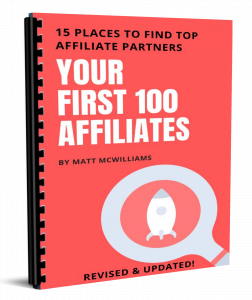 |
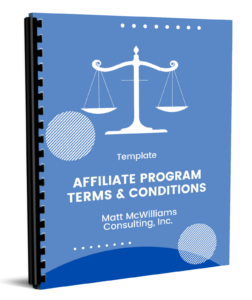 |
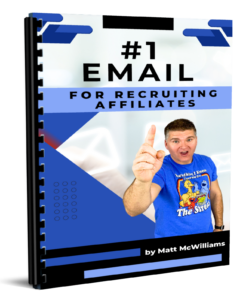 |
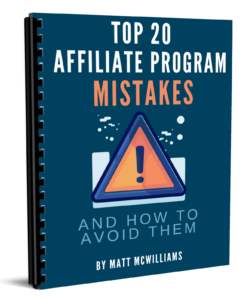 |
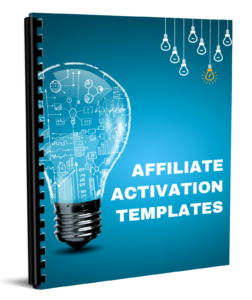 |
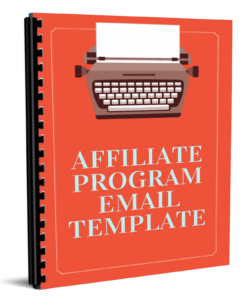 |
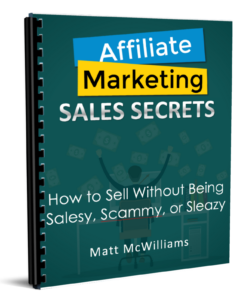 |
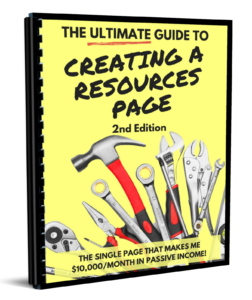 |
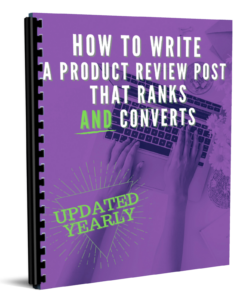 |
